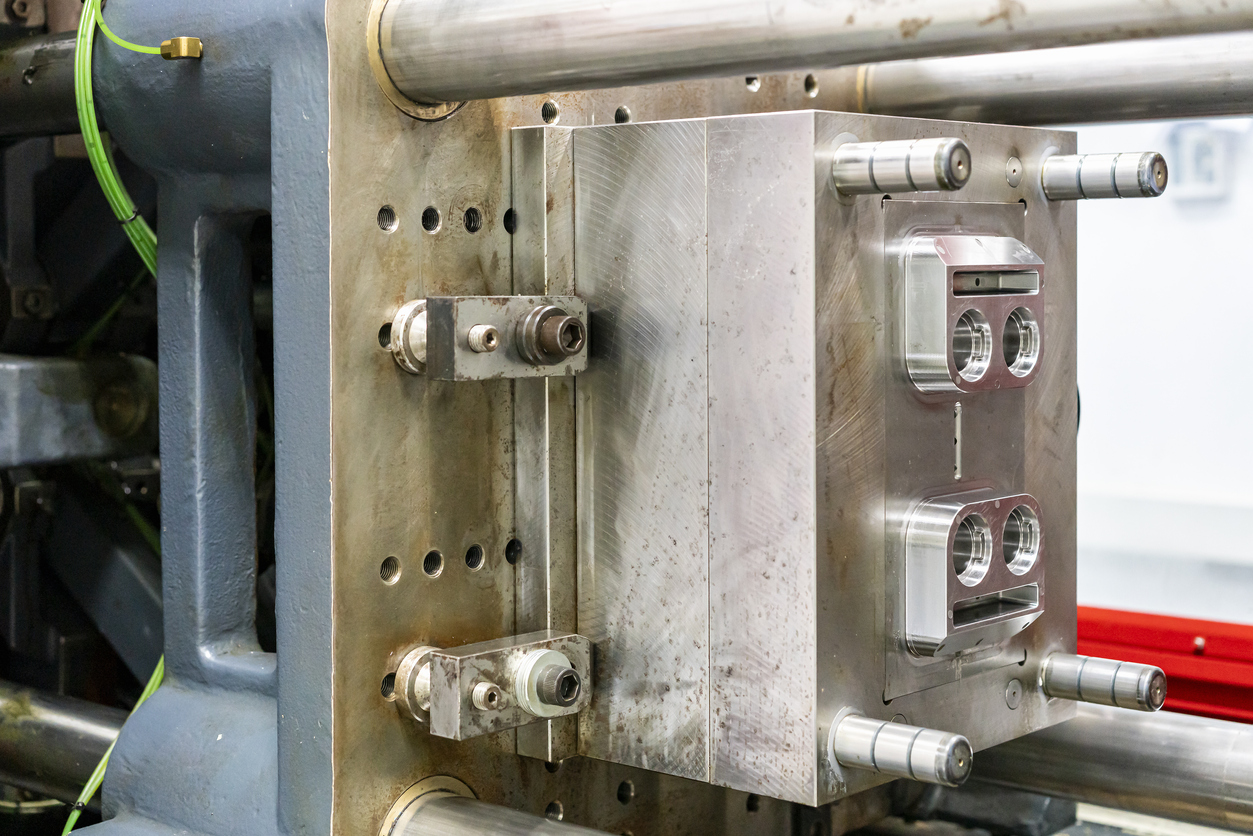Over the past decades, methods of producing plastic parts have evolved significantly. Especially the technologies and solutions just introduced to the market have opened up many new opportunities for enterprises.
Using 3D printing, thermoforming, injection, and even incorporating AI into processes, the production of plastic parts becomes cheaper and faster while maintaining high quality.
In this article, we will discuss the most frequently used technologies for producing plastic parts and their most common applications – from producing spare parts to device components to housings.
1. Injection molding
Method
Injection molding is one of the most common methods of producing plastic parts. It involves injecting dissolved material into a mold and cooling it to obtain its final shape. Due to the high speed and precision of production, it is the leading technology used in mass production.
However, the disadvantage of this solution is the high cost of producing an injection mold, reaching over 100,000 €, as well as the production time of such a form – even several months.
Application
Due to high precision and profitability in large volumes, the technology is used to produce almost every type of plastic element – from electronic housings to large car parts.
2. Print 3D
Method
Just a decade ago, 3D printing was perceived only as a method for creating prototypes or individual spare parts. Since then, however, several additive technologies have been introduced to the market as specifically designed for small-scale manufacturing.
The technology developed by Multi Jet Fusion by HP was the most successful. HP MJF printers can produce up to 1,200 parts daily and ensure quality and precision comparable to injection technology.z
Usage
Due to the high quality and profitability at a small scale, 3D printing is most often used in the production of device housings, spare parts, format parts, and robot grippers, as well as for complex projects. 3D printing tends to be less efficient when there’s a need to produce much larger volumes.
3. Extrusion
Method:
Extrusion is a specific method of creating elongated parts by forcing the material through a mold in the form of a solid profile. The material (e.g. in the form of granules) is gradually heated and extruded through a mold opening and then cooled.
Application
Due to the characteristics of the technology, extrusion is used in the production of pipes, profiles, hoses, and other parts with a constant cross-section.
4. Thermoforming
Method
The thermoforming process involves heating thermoplastic sheets to a plastic state and then arranging them into the appropriate shape using a mold.
The heated sheets are transferred to the forming area, where they are placed over the negative mold. Then the sheet is sucked into the mold and sometimes additionally stretched or subjected to a vacuum to precisely fit the shape of the mold. After forming, the sheet is cooled, which causes the thermoplastic material to return to a solid state.
Application
Thermoforming is very commonly used in mass production of packaging, trays, and housings, regardless of the industry – from medicine to automotive.
5. Blow molding
Method
Blow molding uses plastic pellets that are heated and then inflated into a mold. In the blowing process, compressed air or gas is forced into the preform, which causes the material to expand and fill the mold with its final shape. Then, the mold is cooled to fix the shape of the material.
Application
The technology is widely used in the production of packaging and bottles for drinks and cosmetics.
From data analysis to the selection of the ideal technology for the production of plastic parts
One of the main slogans of the ongoing fourth industrial revolution is the use of all available data to make good business decisions. This is particularly important when choosing the right set of technologies to achieve enterprise goals.
In the case of plastic parts production technology, there are many significant differences that affect:
- Initial cost and production cost per part – due to the high initial cost of some technologies, they may be unprofitable if the demand for parts is low.
- Quality, durability, strength, and use of parts– technologies for the production of plastic parts differ in the material used and the method of creation, which largely affects the features of the parts created and their potential applications.
- Order processing time– due to, for example, the need to produce a mold in the case of injection technology, the order fulfillment time may even exceed 2 months. In the case of other technologies, we can receive the necessary parts even in a few days.
- Restrictions on part geometry– production methods have certain limitations regarding the geometry of the parts. Depending on the variant, producing parts with a complex shape may be impossible, hollow, or long and thin.
- Flexibility in orders and the possibility of modifications between series– if we are working with a product that is still being developed, it may be necessary to choose a technology that allows for any changes between production series. Freedom in this respect is not possible in the case of, for example, injection molds which cannot be modified after production.
Choosing the ideal technology requires looking at all the above aspects and considering the needs of a given project.
For example, if we create an innovative product, we most likely expect flexibility and profitability at low volume and high-quality parts (e.g. casing). In such a situation, 3D printing may be the ideal solution, as it will provide full freedom when placing orders and the possibility of cost-free modifications to the design before each order.
On the other hand, if we have a stable need for a specific part and plan large orders, it will probably be more profitable to invest in an injection mold, which involves an initial cost, but after its production, the production cost per part will be much lower.
When will 3D printing be the perfect solution?
Device manufacturers, maintenance departments, and Industry 4.0 implementers are still finding new applications of 3D printing in the short-series production of plastic parts. Printed plastic elements have become housings, tools, and spare parts for devices in many industries.
As 3D printing experts, we help companies determine what benefits they can gain by choosing this technology for producing plastic parts, and we also support them in designing parts to maximize the potential of 3D printing.


